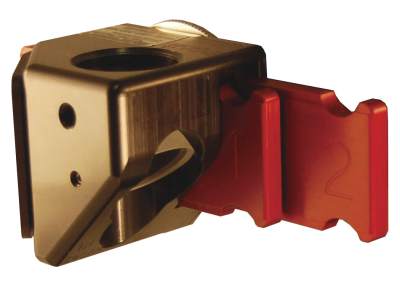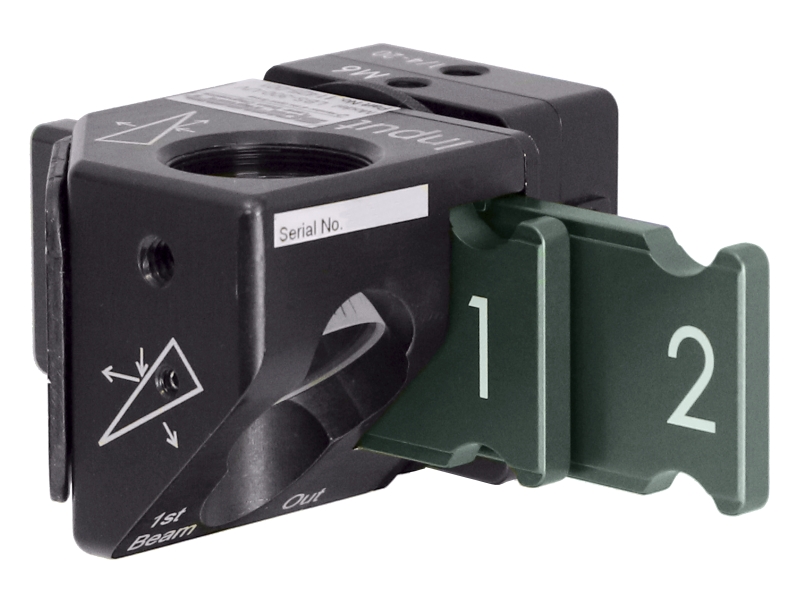
Newport LBP2 系列激光束采样器
- 产品型号:
- 更新时间:2023-12-19
- 产品介绍:Newport LBP2 系列激光束采样器 这些光束采样器设计为使得单个楔形的优先偏振选择效果被抵消,并且所得的光束图像被偏振校正以恢复原始光束的偏振分量。
- 厂商性质:代理商
- 在线留言
产品介绍
| 品牌 | Newport/美国 | 价格区间 | 面议 |
|---|---|---|---|
| 组件类别 | 光学元件 | 应用领域 | 医疗卫生,环保,化工,电子 |
Newport LBP2 系列激光束采样器
这些光束采样器设计为使得单个楔形的优先偏振选择效果被抵消,并且所得的光束图像被偏振校正以恢复原始光束的偏振分量。
设计为与 LBP2 光束分析仪一起使用
样品被偏振校正
包括一组可调节的 ND 滤光片

Newport LBP2 系列激光束采样器
| 对比 | 型号 |
 | LBP2-SAM-BB2LBP2 光束采样系统,190-1550 nm |
 | LBP2-SAM-NIR2LBP2 光束采样系统,1064 nm |
 | LBP2-SAM-UV2LBP2 光束采样系统,266-355 nm |
 | LBP2-SAM-VIS2LBP2 光束采样系统,400-700nm |
特征
用于大功率输入的实时光束监控的光束采样器
LBP2-SAM 系列光束采样器附件允许您测量直径大为 15mm、功率范围从 10 mW 到 ~400 瓦的激光束。光束采样器设计为使得单个楔形的优先偏振选择效果被抵消,并且所得的光束图像被偏振校正以恢复原始光束的偏振分量。光束采样器通过将来自一对楔形物的前表面的入射光束反射 90 度到相机中来操作。约 99% 的光束通过光束采样器传输,0.01% 传递到相机。提供一组可调节的 ND 滤光片以在光束到达相机成像器之前对其进行终强度调节。此外,两个采样器可以串联耦合,提供高达 10-8
的衰减。

LBP2-SAM mounted on an LBP2 laser beam profiler
Additional ND Filters Included
A set of adjustable ND filters, ranging from OD0.3 up to OD4, are provided in the -UV, -VIS, and -NIR versions
to make final intensity adjustments to the beam before it reaches the camera imager, after beam passes through the wedges. In the -BB version, all the ND filters included in the -UV, -VIS, and -NIR versions are included.
There are two slots in series to insert the ND filters on the beam sampler.
Damage threshold of these ND filters are 50 W/cm2
( 100 mW/cm2 for -UV version),
however, distortion due to thermal lensing can happen at as low as 5 W/cm2.
It is advised to use this sampler for optical power ranging from 10 mW to ~400 Watts.
The Broadband Version
One can choose to use the broadband LBP2-SAM-BB2 to handle multiple lasers with a broad range of wavelengths.
The differences between the broadband
version from the others are as follows:
The wedges are not
coated with anti-reflection coating
All the ND filters included in the UV, VIS, and the NIR versions are included
Best Use Recommendation
The ultimate goal of using the beam sampler and the ND filters are to keep the laser intensity level maximum but below the sensor saturation level without
damaging any optical element.
Since the wedges are highly reflective, they are not of concern in most cases.
Keep the laser power so that the intensitive level at below
5 W/cm2
at the first surface of the ND filters
to avoid a thermal lensing effect.
Also, try to avoid using too many ND filters.
The more filters are used in the beam path, the more distortion and interference can happen.



